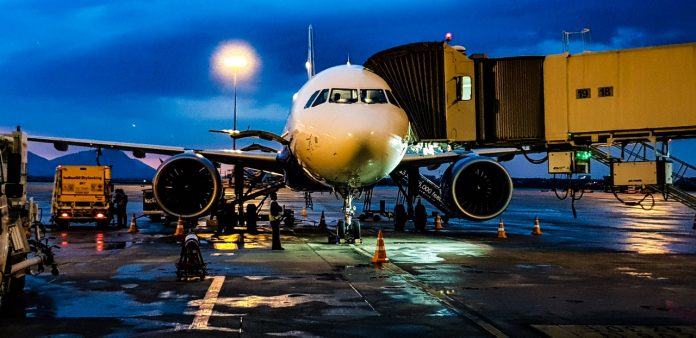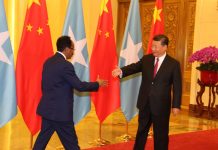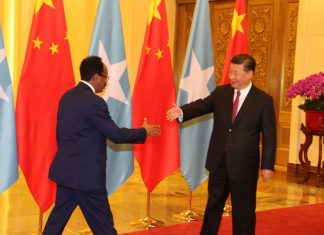In 1980, China had a population very similar to that of Africa today—about a billion people. And it represented about 2 percent of global GDP—less than the over 3 percent that Africa contributes today. Around that time, Deng Xiaoping ignited the world’s imagination with economic reforms including welcoming foreign direct investment. And today Africa’s political and economic reforms have equally captured the world’s attention and are attracting considerable foreign investment—including from China.
Africa will of course develop on its own terms — as did China. But there are some proven lessons from China’s success which I believe could provide an interesting reference point — even inspiration.
One lesson is the value of a clear policy direction with a focus on implementation. Developing the aviation sector was a strategic policy of the Chinese government as it focused on economic development. It built airports and set the stage for the successful development of airlines to deliver much-needed connectivity.
Such a determined policy approach is much easier in China than in other countries. And driving developments in a single political entity is less of a challenge than across the 54 states of the African Union. But it is not impossible.
The Agency for Aerial Navigation Safety in Africa & Madagascar (ASECNA) is a good example of what can be accomplished. Establishing it in 1959 to provide air navigation services across a vast section of the African continent was a visionary achievement. If only Europe could implement a similar approach, but after decades of trying, its skies are still fragmented.
For many of Africa’s governments, aviation is not the top priority. Eliminating poverty, improving health, raising living standards, and generating jobs rank much higher. My message today is not to shift priorities, but to ask governments to see aviation as an economic driver…and develop policies to support that important role.
African aviation supports 6.7 million high quality jobs and business activity totaling some $67.8 billion. It is like the goose that lays golden eggs. Aviation connectivity links the continent’s businesses to global markets. And that generates economic opportunities. But if the goose is buried under high taxes it cannot lay eggs. And if aviation is taxed to highly, its ability to be an economic catalyst is compromised.
With that as a background, I want to address the proliferation of fees and taxes to support infrastructure development. Infrastructure is critical to aviation. And it must be paid for. There are established principles for such funding developed through [the International Civil Aviation Organization) ICAO. These include transparency, consultation with users and cost-relatedness. To ensure that the benefits accrue to those that have paid, pre-financing is not allowed unless specific safeguards for users are met. Unfortunately, these basic principles are not being followed in the case of infrastructure development fees in Africa. This can only have an adverse effect on the growth of aviation—choking the golden goose to go back to my earlier analogy.
Let me focus a bit on Senegal. In contrast to the charges freeze at ASECNA, l’Agence des Aéroports du Sénégal increased international landing charges by 13% from January 2012. Consultation (after the increase was announced) resulted in a two-month delay for implementation, but no greater understanding as to why the increase was needed. Moreover, the Airport Development Fee now stands at about $68 per passenger—the highest in Africa. There is little transparency on how these funds—collected in contravention of ICAO principles—are being managed. And even though the airport is scheduled to open this year there has been no real engagement of the airlines—the eventual users of the facility—to ensure it meets their needs.
My remarks should not be construed as singling Senegal out. Benin, Cameroon, the Democratic Republic of the Congo, Gambia, Guinea-Bissau, Mali, Niger, Sierra Leone and Togo all have development charges ranging from $9 per passenger to over $50. I also understand that the Central African Republic has plans to implement a similar funding model.
But I do see the example of Senegal as an immediate opportunity to work together, make improvements and help states in this region develop a clearer understanding that aviation is not a cash cow to be milked. It is a powerful work horse. Public policies should be designed to take advantage of its unique ability to catalyze economic growth.
Supported by adequate infrastructure, the proper cost structure, and operating within a policy framework that values its contribution, aviation could play a much more prominent role in the African economy as a whole, as well as in Central West Africa. In such a policy environment, one could even imagine that a successful regionally based carrier—operating across political borders as a business and without government interference—could help drive the continent’s integration and economic advancement.
As I mentioned at the beginning of my remarks, I saw how Chinese aviation—with safety as the top priority in a clear policy agenda to promote growth—helped lay the foundations for the phenomenal economic success of China. Having just held our AGM in Beijing a few months ago, it is significant that the world’s airlines will meet in Cape Town in 2013. Africa has the greatest potential of any continent for aviation to contribute even more to its development.
Already it plays a key role. Each year 67 million people fly on 762,000 flights that connect to Africa’s 371 commercial airports. As I mentioned before, that directly creates jobs for 6.7 million Africans and facilitates some $67.8 billion economic activity. Our goal is to make aviation play an even more powerful role in Africa. To that end, we are working to formalize a framework for cooperation with the African Union. If we can improve safety, create a common policy approach in line with global standards and fund infrastructure appropriately, aviation could have an even bigger positive impact on Africa’s development.
Aviation connectivity is about people doing business, products moving to markets and new opportunities being discovered. With a few kilometers of runway even the most remote location can be connected to the global village. This has a huge and positive impact on development. And that is the best reason for governments across Africa to care about aviation and work together to ensure its safe, efficient and sustainable progress.
Tony Tyler is the Director General and CEO of the Internaitonal Air Transport Association (IATA). The above COMMENTARY is an edited excerpt of Mr. Tyler’s remarks at Aviation Days, held in Dakar, Senegal, on Sept. 3, 2012.













